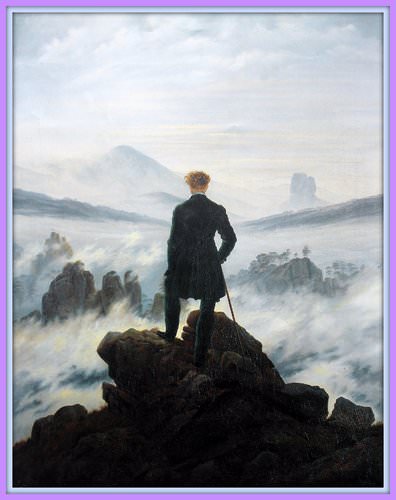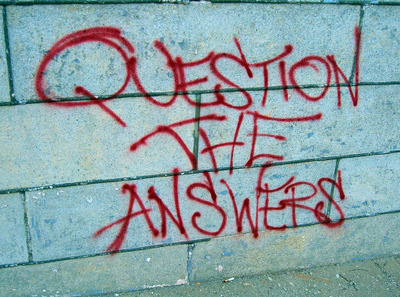1.3: Chaos and The Cosmos
- Page ID
- 2694
\( \newcommand{\vecs}[1]{\overset { \scriptstyle \rightharpoonup} {\mathbf{#1}} } \)
\( \newcommand{\vecd}[1]{\overset{-\!-\!\rightharpoonup}{\vphantom{a}\smash {#1}}} \)
\( \newcommand{\dsum}{\displaystyle\sum\limits} \)
\( \newcommand{\dint}{\displaystyle\int\limits} \)
\( \newcommand{\dlim}{\displaystyle\lim\limits} \)
\( \newcommand{\id}{\mathrm{id}}\) \( \newcommand{\Span}{\mathrm{span}}\)
( \newcommand{\kernel}{\mathrm{null}\,}\) \( \newcommand{\range}{\mathrm{range}\,}\)
\( \newcommand{\RealPart}{\mathrm{Re}}\) \( \newcommand{\ImaginaryPart}{\mathrm{Im}}\)
\( \newcommand{\Argument}{\mathrm{Arg}}\) \( \newcommand{\norm}[1]{\| #1 \|}\)
\( \newcommand{\inner}[2]{\langle #1, #2 \rangle}\)
\( \newcommand{\Span}{\mathrm{span}}\)
\( \newcommand{\id}{\mathrm{id}}\)
\( \newcommand{\Span}{\mathrm{span}}\)
\( \newcommand{\kernel}{\mathrm{null}\,}\)
\( \newcommand{\range}{\mathrm{range}\,}\)
\( \newcommand{\RealPart}{\mathrm{Re}}\)
\( \newcommand{\ImaginaryPart}{\mathrm{Im}}\)
\( \newcommand{\Argument}{\mathrm{Arg}}\)
\( \newcommand{\norm}[1]{\| #1 \|}\)
\( \newcommand{\inner}[2]{\langle #1, #2 \rangle}\)
\( \newcommand{\Span}{\mathrm{span}}\) \( \newcommand{\AA}{\unicode[.8,0]{x212B}}\)
\( \newcommand{\vectorA}[1]{\vec{#1}} % arrow\)
\( \newcommand{\vectorAt}[1]{\vec{\text{#1}}} % arrow\)
\( \newcommand{\vectorB}[1]{\overset { \scriptstyle \rightharpoonup} {\mathbf{#1}} } \)
\( \newcommand{\vectorC}[1]{\textbf{#1}} \)
\( \newcommand{\vectorD}[1]{\overrightarrow{#1}} \)
\( \newcommand{\vectorDt}[1]{\overrightarrow{\text{#1}}} \)
\( \newcommand{\vectE}[1]{\overset{-\!-\!\rightharpoonup}{\vphantom{a}\smash{\mathbf {#1}}}} \)
\( \newcommand{\vecs}[1]{\overset { \scriptstyle \rightharpoonup} {\mathbf{#1}} } \)
\( \newcommand{\vecd}[1]{\overset{-\!-\!\rightharpoonup}{\vphantom{a}\smash {#1}}} \)
\(\newcommand{\avec}{\mathbf a}\) \(\newcommand{\bvec}{\mathbf b}\) \(\newcommand{\cvec}{\mathbf c}\) \(\newcommand{\dvec}{\mathbf d}\) \(\newcommand{\dtil}{\widetilde{\mathbf d}}\) \(\newcommand{\evec}{\mathbf e}\) \(\newcommand{\fvec}{\mathbf f}\) \(\newcommand{\nvec}{\mathbf n}\) \(\newcommand{\pvec}{\mathbf p}\) \(\newcommand{\qvec}{\mathbf q}\) \(\newcommand{\svec}{\mathbf s}\) \(\newcommand{\tvec}{\mathbf t}\) \(\newcommand{\uvec}{\mathbf u}\) \(\newcommand{\vvec}{\mathbf v}\) \(\newcommand{\wvec}{\mathbf w}\) \(\newcommand{\xvec}{\mathbf x}\) \(\newcommand{\yvec}{\mathbf y}\) \(\newcommand{\zvec}{\mathbf z}\) \(\newcommand{\rvec}{\mathbf r}\) \(\newcommand{\mvec}{\mathbf m}\) \(\newcommand{\zerovec}{\mathbf 0}\) \(\newcommand{\onevec}{\mathbf 1}\) \(\newcommand{\real}{\mathbb R}\) \(\newcommand{\twovec}[2]{\left[\begin{array}{r}#1 \\ #2 \end{array}\right]}\) \(\newcommand{\ctwovec}[2]{\left[\begin{array}{c}#1 \\ #2 \end{array}\right]}\) \(\newcommand{\threevec}[3]{\left[\begin{array}{r}#1 \\ #2 \\ #3 \end{array}\right]}\) \(\newcommand{\cthreevec}[3]{\left[\begin{array}{c}#1 \\ #2 \\ #3 \end{array}\right]}\) \(\newcommand{\fourvec}[4]{\left[\begin{array}{r}#1 \\ #2 \\ #3 \\ #4 \end{array}\right]}\) \(\newcommand{\cfourvec}[4]{\left[\begin{array}{c}#1 \\ #2 \\ #3 \\ #4 \end{array}\right]}\) \(\newcommand{\fivevec}[5]{\left[\begin{array}{r}#1 \\ #2 \\ #3 \\ #4 \\ #5 \\ \end{array}\right]}\) \(\newcommand{\cfivevec}[5]{\left[\begin{array}{c}#1 \\ #2 \\ #3 \\ #4 \\ #5 \\ \end{array}\right]}\) \(\newcommand{\mattwo}[4]{\left[\begin{array}{rr}#1 \amp #2 \\ #3 \amp #4 \\ \end{array}\right]}\) \(\newcommand{\laspan}[1]{\text{Span}\{#1\}}\) \(\newcommand{\bcal}{\cal B}\) \(\newcommand{\ccal}{\cal C}\) \(\newcommand{\scal}{\cal S}\) \(\newcommand{\wcal}{\cal W}\) \(\newcommand{\ecal}{\cal E}\) \(\newcommand{\coords}[2]{\left\{#1\right\}_{#2}}\) \(\newcommand{\gray}[1]{\color{gray}{#1}}\) \(\newcommand{\lgray}[1]{\color{lightgray}{#1}}\) \(\newcommand{\rank}{\operatorname{rank}}\) \(\newcommand{\row}{\text{Row}}\) \(\newcommand{\col}{\text{Col}}\) \(\renewcommand{\row}{\text{Row}}\) \(\newcommand{\nul}{\text{Nul}}\) \(\newcommand{\var}{\text{Var}}\) \(\newcommand{\corr}{\text{corr}}\) \(\newcommand{\len}[1]{\left|#1\right|}\) \(\newcommand{\bbar}{\overline{\bvec}}\) \(\newcommand{\bhat}{\widehat{\bvec}}\) \(\newcommand{\bperp}{\bvec^\perp}\) \(\newcommand{\xhat}{\widehat{\xvec}}\) \(\newcommand{\vhat}{\widehat{\vvec}}\) \(\newcommand{\uhat}{\widehat{\uvec}}\) \(\newcommand{\what}{\widehat{\wvec}}\) \(\newcommand{\Sighat}{\widehat{\Sigma}}\) \(\newcommand{\lt}{<}\) \(\newcommand{\gt}{>}\) \(\newcommand{\amp}{&}\) \(\definecolor{fillinmathshade}{gray}{0.9}\)Chaos and Cosmos

People prefer order to chaos and it appears they are willing to pay quite a price for that order. Humans are faced with a large number of important questions, such as: What is life all about? Where do we come from? What is the meaning of it all? How did the world come from? What is the right thing to do? Rather than figure out answers to these questions for themselves, most humans appear willing to accept those answers provided through their culture. They learn them through their language, their religious belief systems, their educational system, and other major social institutions. Most humans appear ill suited to reject the answers of their culture or even to subject them to careful scrutiny. Rather than live without answers and instead face the chaos, most humans accept the order as it is given to them.
Cosmos Is Better Than Chaos!
Over time there often develops serious questioning of the order, the foundation of the order, and what is dependent upon it. In order to maintain that order people need to turn aside from the criticisms and reaffirm their basic beliefs. The reward for continuing in that belief is order. The price they pay is to halt the questioning process. Many do so because they fear the result of displacing or surrendering the beliefs, they lose the safety and calm of the order.
Here is a story that many of you might find quite illustrative, entertaining, and educational.
Santa Claus

Now when I was growing up I learned about good old Santa Claus. For many years I received gifts from Santa at Christmas time. However, I came to ask questions about the fat guy with the red suit with white piping and the reindeer and the North Pole house and factory, the elves, Mrs. Claus, the whole deal! Whenever I asked questions such as, “but how does Santa get in here? We don’t have a chimney” I would be given an answer meant to assure me, to settle my doubts and restore me to the comfortable calm of being certain that there was a Santa and all would be well and work out. “He’ll find a way. He always does. Don’t worry”
Well, I did worry. I did have lots of questions. As I grew older the questions grew and the answers became less and less acceptable. “What about the other Santa’s? What about the reindeer? How big was the chimney? There are a lot of children in the world! How does he get it done in one night?” Now, I had friends my age who were believers and they would tell stories of Santa eating the cookies they left out for him. I thought that those cookies explain how he was so fat, but there were other problems. What about the reindeer? No one ever reported seeing signs of the deer. I am a city kid and I knew from my brief exposure to elephants at the circus, horses at parades and cows at expositions that large mammals were always dropping feces. Where was the reindeer sh..? I wondered. It had to be somewhere. All night long Santa working those deer. There had to be signs somewhere, but there never was.
Those of you who are born in this country and those who spend a few years here quickly come to learn about the story of Santa Claus, whether you are a Christian or not, it does not seem to matter. The holiday has been secularized and children from other cultures and religions are often, but not always, given gifts by family and friends so that the children will not feel slighted by the fat guy skipping them possibly making them think that there was something wrong with them or their family or making them feel marked as different from the other children. Children also come to learn that there is no Santa Claus. Oops, sorry if some of you didn’t know that already. Sometimes a child discovers the truth. Sometimes parents reveal the truth. Sometimes older brothers or sisters tease their younger siblings with the truth. Occasionally it is an older friend or friend of a friend who, for any one of a number of motives, may reveal the truth. And now we get to the point. As long as we believe we get gifts. We do not want to stop getting the gifts and so sometimes, we go on believing or pretending to believe so that the gifts will continue. This can go on for some time but not forever, in the case of the Santa Claus story.
Now, despite the fact that people know that the story is not true many people in this country go on telling the story to children. They act as if it were true in the presence of small children. They tease small children with warnings about being good or else they won’t get their gifts nor asking children what did Santa bring you? Why do people go on telling a story that they know isn’t true? In this case the answer lies in what it is of value that people derive from the telling of the tale. People who tell the tale to small children and bring them gifts in the name of Santa do so because it is fun. They enjoy doing so. They enjoy making small children happy. And so the tale goes on because people experience values in doings so. The telling of the tale assists children to learn the lesson that there is joy in giving, for Santa is joyful. The moral: it is better to give than to receive.
The telling of a tale that isn’t true and the desire to promulgate it is part of what is known as a broken myth: a story we know is not true but we repeat anyway because of the values derived from doing so.
In this course you will be challenged to consider many questions, many issues. Some of the issues deal with matters concerning which you share in a belief system with many other people. You will be challenged to consider the possibility that the ideas you take as given truths may not be true at all. You will be challenged to consider looking at matters from another point of view. It could just be that some of the ideas you have are stories, which may not be true. Perhaps, people believe in some of these stories because, as with the Santa story, they receive gifts for believing. They receive the gift of an order for their lives and they avoid chaos. People cannot live with chaos and so they may on believing in a story that provides order in their lives even if it, like the Santa tale, has a lot of holes in it. They may believe even if the stories have contradictions or are filled with many mysteries.
Now we learn from our culture a number of things and a way to look at all things. We inherit through our culture a worldview. Now what philosophers do is examine with a critical eye all things. It may just be that elements of that worldview are not correct or true. It could just be that some of our most cherished beliefs have flaws in them, such as in the Santa story, and we just don’t see them as yet.
Philosophy examines the most basic ideas with which humans think. It takes as little for granted as is possible. In fact it aims at taking nothing for granted and subjecting all ideas and beliefs to the examination of reason. Here is the best definition of Philosophy that I have ever come across:
Philosophy is the most critical and comprehensive thought process devised by humans.
Philosophy is not the means by which humans have erected systems of beliefs to help them answer the most perplexing and important issues but it is the means by which those answers are evaluated, examined and found to be acceptable or else rejected.
Some of the earliest forms for the answers to life’s most basic questions have been found in the form of stories that were told long, long ago. These stories were passed on from generation to generation. The stories were told in the hope that those who heard them would believe them and be guided by them. Such stories are called myths. Myths may or may not be true. The point about a myth is that those who pass them on hope that those who hear them will believe them and be guided by them. In this manner you can think of the Santa Story as a myth, and a broken myth at that because most who tell the tales know that they are not true. It doesn’t matter whether they are true or not. The teller of the myth- intends for the audience to believe.
OK, let’s take a look at where we are. Humans have a sense of wonder. They ask all sorts of questions. Humans want answers to the most important questions. Humans want and need order in their lives. They abhor chaos. Humans can’t abide a mental chaos. The earliest sets of answers to life’s most pressing questions appear to have been contained in and passed ion through stories. People like stories. They learn a lot from stories. People gravitate to the story, the gossip, and the tales about the professor more than they focus on the lesson. Some of the earliest stories meant to be instructive, answer questions, and provide order are myths. As time goes on within every culture there arise so many myths, so many stories that some people start to wonder about the stories themselves. Some people even question the tales.
- Are they true? They can’t all be true at once! Which are true? How do we know?
Philosophy Arises Out of Wonder
Philosophy arises out of a cultural background. Philosophy arises out of a questioning of the myths, the accepted truths, the beliefs, and tales of a culture. We will start the course by examining how Philosophy arose in the West out of the questioning of the Greek myths and ideas current in the time of Socrates. We shall learn how Socrates struggled to find truth and wisdom and was put to death for his efforts to find true virtue and the Good. We shall learn how Plato, Socrates student, changed his life around after the execution and took up the quest of Socrates and how Plato found answers to the questions that perplexed Socrates. Plato found not only answers but also a method for humans everywhere to work out answers without needing to rely on memorizing the official answers of previous generations and to repeat them over and over again, despite obvious problems with them. Before we get to these Greeks and the origins of Philosophy I think you may want to know why it is important to look at them. In the next section we shall draw a number of parallels between our own time and that of the Greeks so that you can apply what we learn about them to our own times. You might also learn a few things that you could apply to your own life now! That wouldn’t be at all undesirable.
View: Video
Philosophy Applications

Your friend has failed an exam and blames their failure on the difference between them and their professor's astrological signs.
- Are astrological signs connected to passing or failing an exam? Explain.
- Is your friend's remark logical? Why or why not.
- In your opinion is the belief in zodiac signs a myth, a tale or a broken myth? Explain.
Vocabulary Quizlet 1.3

